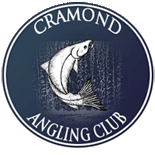Conserving fish stocks in the River Almond
We should all be aware and more importantly practise the recently updated Forth District Salmon Fishery Board conservation policy, the focus of which is around Catch and Release and ensuring we protect the fish we have in our River. The Fisheries Research Services have produced an excellent guide, titled Catch and Release: A guide to Best Practise , also FDSFB Catch and Release Guidelines These offer up good information regarding tackling up, the playing, handling and releasing of fish. It should be pointed out that this isn't just about salmon; we should be practising this with both our native Brown Trout and migratory Sea Trout as well.
In short, if you are to make releasing a fish a success, minimising stress and preventing damage, then here are some simple procedures to follow.
The tackle, tackle up with conservation in mind, barbless/debarbed hooks are strongly advised as fish have to be released. Single & double hooks cause much less damage than trebles, which is why we don't permit the use of treble hooks now. There's less risk of damage with smaller hooks. The effectiveness of rapala's and similar lures can be improved by using a single or double hook sliding rig, similar to a tube fly set-up and by removing the treble hook from a mepps or flying C and replacing with a split ring, with a single or double make these lures just as effective and easy to change.
The landing, use a fine knotless mesh net, ensuring that the fish remains in the net and in the water. Do not beach the fish, as the abrasion often causes damage leading to infection. Minimise handling the fish and DO NOT LIFT THE FISH BY THE TAIL.
Removing the hook, please ensure that your hands are wet, as warm dry hands will cause abrasion and again this could lead to infection. Gently remove the hook, taking care not to squeeze the fish. It is highly recommended that all anglers should carry with them forceps or a hook disgorger. Use barbless or micro barbed single hooks, as this will make the removal process easier.
The release, if possible try to release the fish from the net, without touching it! If you need to assist the fish, then again ensure that your hands are wet, gently support the fish, facing it into the current, allowing the fish to recover and swim away of its own accord. Do not weigh the fish, simply estimate it weight from its length. If you want to take a photograph, then do so while the fish is in the net.
Lastly, remember to record the fish's details for your "Catch Return" form.
Record all released fish and estimate weight from length
| Length | Weight | Length | Weight | Length | Weight | Length | Weight | |||||||
| cm | inches | lbs | cm | inches | lbs | cm | inches | lbs | cm | inches | lbs | |||
| 50 | 19.7 | 3 | 75 | 29.5 | 10 | 91 | 35.8 | 18 | 101 | 39.8 | 25 | |||
| 55 | 21.7 | 4 | 77 | 30.3 | 11 | 93 | 36.6 | 19 | 103 | 40.6 | 26 | |||
| 59 | 23.2 | 5 | 79 | 31.1 | 12 | 94 | 37.0 | 20 | 104 | 40.9 | 27 | |||
| 63 | 24.8 | 6 | 81 | 31.9 | 13 | 96 | 37.8 | 21 | 105 | 41.3 | 28 | |||
| 66 | 26.0 | 7 | 83 | 32.7 | 14 | 97 | 38.2 | 22 | 106 | 41.7 | 29 | |||
| 69 | 27.2 | 8 | 85 | 33.5 | 15 | 99 | 39.0 | 23 | 108 | 42.5 | 30 | |||
| 72 | 28.3 | 9 | 87 | 34.3 | 16 | 100 | 39.4 | 24 | 109 | 42.9 | 31 | |||
| 89 | 35.0 | 17 | ||||||||||||
The Club recommends that all anglers should carry with them forceps or a hook disgorger.
Fish Disease
Gyrodactylus salarisis (GS) a parasite which infects the skin, gills and fins of salmon, trout and some other types of fish in fresh water. A guide to protecting freshwater fish stocks from Gyrodactylus salaris, written by the Department for Environment Food and Rural Affairs, Welsh Assembly Government, Scottish Executive and the Department of Agriculture and Rural Development titled Keep Fish Disease Out
Infectious Salmon Anaemia (ISA) is a viral disease which wild salmon are vulnerable to, it has been endemic for several years in salmon farms in Norway, but was first detected in a number of Scottish farms in 1998. Infectious Salmon Anaemia (ISA)
Ulcerative Dermal Necrosis (UDN) was rife among wild salmon in the late 1960s and 70s. Although the causative organism has never been identified, it was almost certainly another virus. This can be identified as small bleached areas on the head, back and tail, which are covered in a slimy bluish-grey growth. The affected areas are vulnerable to ulceration and infection by fungus.
lepeophtheirus salmonis (Sea Lice) which can only survive in salt water and are a naturally occurring parasite whose presence in small numbers indicates that a salmon in a river is fresh run. However, large numbers can have a highly damaging result, especially on Sea Trout and Sea Trout smolts, due to the amount of time these fish remain close to inshore.
